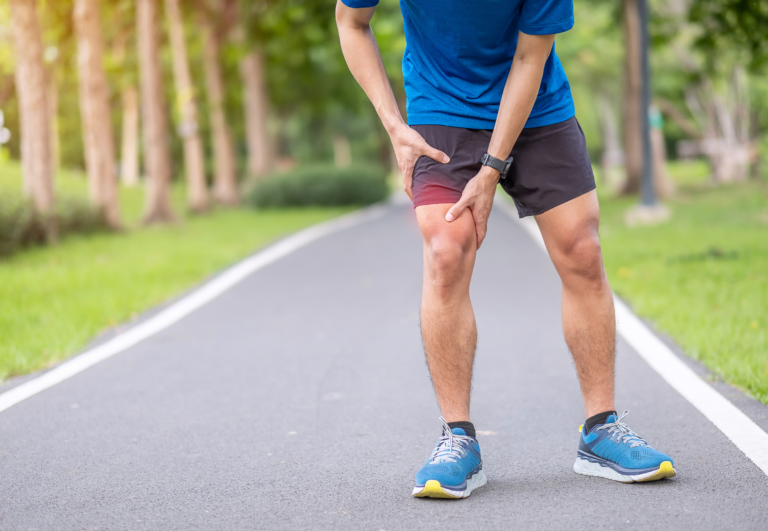Guide to Post-Run Recovery for Beginner Runners: Optimal Strategies and Tips
As a UESCA certified running coach, I often emphasize the importance of a solid post-run recovery routine for beginner runners. Recovery is not just about feeling better after a run; it’s the foundation of your future performance and injury prevention. Cooling down, stretching, and hydrating are key components that help transition your body from the stress of running to a state conducive to healing and improving.
My experience has taught me that the most effective post-run routine involves a gradual cool-down, dynamic stretching, and adequate hydration. This routine helps to reduce muscle soreness and sets the stage for optimum recovery, enabling you to hit the ground running for your next workout.
Implementing a structured post-run recovery is as essential as the run itself. I leverage this process to aid in minimizing fatigue, replenishing energy stores, and repairing muscle tissue. By integrating these practices into your running regimen, you’ll support your body’s natural recovery processes and prepare for your next training session with renewed vigor.
Fundamentals of Post-Run Recovery
Adequate post-run recovery is the cornerstone of every beginner runner’s routine. It ensures sustained performance and reduces the risk of injury. Let’s explore how to capitalize on the recovery process, why proper hydration and nutrition are vital, and the reasons rest and sleep form the bedrock of recovery.
the Recovery Process
After a run, my body begins a process to repair micro-tears in muscle fibers and replenish depleted energy stores. This is crucial for adaptation and improving performance. To aid this, I advise a cool-down period of light activity to gradually reduce heart rate and promote blood flow, which helps in the removal of waste products from the muscles.

The Role of Hydration and Nutrition
Rehydrating is a top priority post-run to replace fluid loss and maintain balance in body functions. I recommend drinking water and sometimes electrolyte solutions to replenish lost minerals and prevent dehydration. Nutrition is equally as important; consuming carbohydrates and proteins within 45 minutes after finishing can boost glycogen stores and start muscle recovery. Here’s a quick guide:
- Rehydrate: 16-24 oz of water for every pound lost during the run
- Refuel:
- Carbohydrates: Aim for 0.5-0.7 grams per pound of body weight
- Protein: Approximately 15-25 grams
Importance of Rest and Sleep
Rest is when the body’s magic happens. Encouraging my clients to rest allows the body to focus on the recovery process, restoring energy and facilitating muscle repair. Sleep enhances this further, providing deep recovery and improving the overall rejuvenation process. Aim for 7-9 hours of quality sleep to support the body’s natural recovery cycle.
Active Recovery Techniques
After a demanding run, employing effective active recovery techniques is essential to alleviate muscle soreness and maintain flexibility. This not only speeds up recovery but also enhances the overall running experience by preparing muscles for future workouts.
Stretching and Flexibility
I always recommend that runners incorporate stretching into their post-run routine to help flush out lactic acid and decrease stiffness. It’s crucial to focus on stretches that target the muscles most used during running:
- Quadriceps
- Hamstrings
- Calves
- Hip flexors
Each stretch should be held for at least 30 seconds to allow the muscle to relax and lengthen, improving flexibility and range of motion.
Optimizing Active Rest Days
On rest days, it’s beneficial to engage in low-intensity activities to promote blood flow without placing undue stress on the muscles. Examples of active recovery workouts include:
- Yoga: Enhances flexibility and core strength.
- Walking: Maintains cardiovascular fitness.
- Easy cycling: Low-impact option that aids in recovery.
By incorporating these forms of active recovery, muscles recover more efficiently, reducing overall soreness and preparing them for the next running session.
Injury Prevention and Management
As a running coach, I emphasize that managing injuries and preventing them are crucial to the longevity and enjoyment of your running journey.
Preventing Common Running Injuries
To prevent common running injuries, it’s essential to follow a well-structured training plan. Overloading the body too quickly often leads to stress injuries, particularly in the knees and lower back. I recommend:
- Gradual Increase: Elevate training intensity by no more than 10% per week to avoid over-stress.
- Cross-Training: Incorporate activities that build strength and flexibility, reducing muscle tension.
- Proper Gear: Use well-fitting running shoes that provide adequate support for your foot type.
Additionally, a dynamic warm-up before runs stimulates blood flow and prepares the joints for activity. Post-run, focus on cooldowns and gentle stretching to alleviate muscle tension. Listening to your body is key—if you sense a niggle, rest or ease back on training to prevent it from becoming a full-blown injury.
Managing Soreness and Inflammation
When tackling soreness and inflammation, recovery tools like foam rolling can help with muscle repair and alleviate discomfort from micro-tears. Here’s how to manage post-run recovery effectively:
- Foam Rolling: Spend some time foam rolling to release muscle tension and enhance blood flow.
- Ice and Compression: These can reduce inflammation and aid in muscle recovery.
Keep an eye on your heart rate and breathing; return to a resting rate signifies engagement of the parasympathetic nervous system, which supports recovery. If discomfort persists or escalates, it’s best to consult with a healthcare professional to avoid chronic issues.
Advanced Recovery Strategies

In improving post-run recovery, we need to focus on techniques that enhance muscle repair and adopt nutritional tactics that bolster recovery processes.
Techniques for Enhanced Muscle Repair
For muscle recovery, it’s important to facilitate protein synthesis and optimize the release of growth hormone. This hormonal response is key to repairing the microscopic damage caused by running.
I recommend including static stretching to aid in flushing out lactic acid, thus reducing muscle stiffness. Ensuring you get quality sleep is also crucial as growth hormone, which is vital for muscle repair, is released during deep sleep stages.
- Static Stretching: Minimum of 10 minutes post-run
- Sleep: Aim for 7-9 hours per night
Nutritional Tactics for Improved Recovery
After a run, your body needs the right fuel to recover. Consuming a combination of carbs and protein can help replenish energy stores and promote muscle repair. One example is chocolate milk, which provides a good ratio of carbohydrates to protein and can kickstart recovery.
Post-Run Recovery Nutrition:
| Nutrient | Food Source | Timing |
|---|---|---|
| Carbs | Chocolate milk | Within 30 minutes |
| Protein | Protein shake | Post-run and bedtime |
Remember to hydrate well and consider your personal dietary needs when selecting recovery foods.
Evaluating Recovery Gear and Supplements
After an intensive run, your body requires proper recovery strategies to facilitate muscle repair and growth. Recovery gear and supplements can play an essential role in enhancing this process, and assessing their value can help optimize your post-run routine.
Assessing the Value of Recovery Footwear
Recovery footwear is specifically designed to provide comfort and support post-run. When evaluating recovery footwear options, consider features like cushioning and arch support, which can alleviate the stress on your feet. Effective recovery footwear can contribute to improved circulation and reduced muscle fatigue, aiding in quicker muscle repair.
The Use of Supplements in Recovery
Nutrition is pivotal for recovery, and supplements can fill gaps in your dietary intake. Look for products containing vitamins B12 and folic acid, which are vital for energy production and efficient muscle repair. Always choose supplements that are backed by scientific research and align with your nutritional needs to support recovery and overall health growth.






